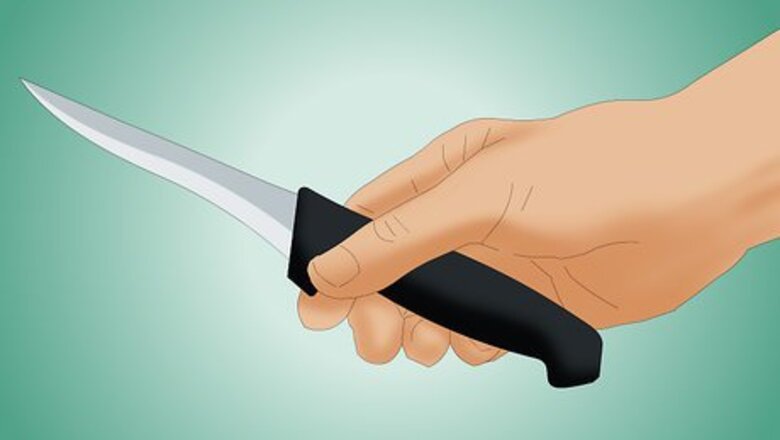
views
Skinning the Rabbit

Kill the rabbit humanely. Use a knife to slit its throat, or break its neck swiftly. There is no need to allow the animal to suffer. Respect its value to you.

Place the rabbit on a solid surface and slice its skin. Place the rabbit on a cutting board or another flat surface with enough space for you to work with. On the rabbit’s back pinch its hide and cut it with a sharp knife near the base of the neck. If you’re out on the field, you may use a sharp stick or stone to cut the rabbit open. Use a sharp knife or cleaver just above its knees to cut off the rabbit’s feet. Cut off the head and tail. Use your hand to loosen the skin. When you’ve made the cut, turn the knife edge facing up and cut from the stomach to the neck. Be sure not to pierce the stomach because this can allow its contents to contaminate the meat.
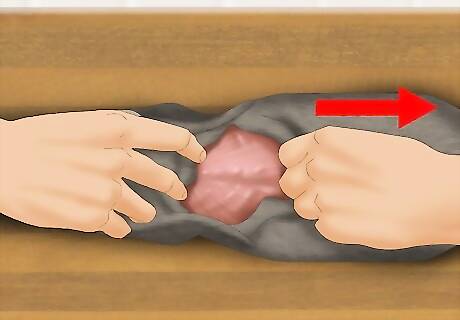
Take the fur off. Use your index finger and middle finger on both hands to create an opening after you have made your cut. Steady and with a firm grasp, use your fingers to hook up under the skin and pull one of your hands towards the rear and the other hand towards its head. The skin will tear into two pieces. Be sure to keep grabbing more hide to improve your grip and pull to separate. Grab the rabbit carcass by its back legs and gather a handful of skin around one of its ankles. Break the skin by twisting and pulling. The fresher the rabbit, the easier it will be to remove its skin.
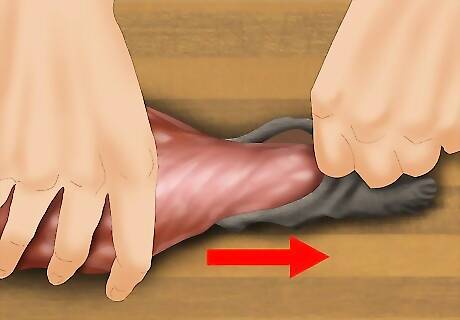
Take the legs out. Tear the fur off the rabbit’s legs with a sharp tug. There will be fur around the feet like shoes. Pull its hide off of its rear. The tail may come off or stay on. Pop the legs through the skin by turning the skin so you can push the rabbits stumps out of them.
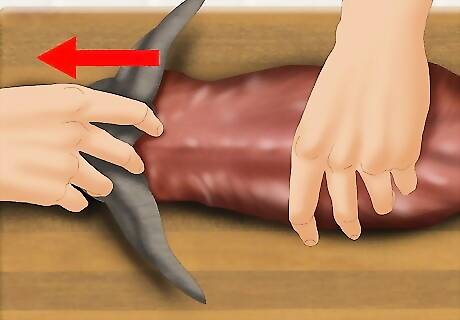
Pull the fur from up around the neck up to the base of its skull. Cut the head and tail off if they haven’t come off already. You must open the sides of the sternum to take the rabbit’s windpipe from below its neck and remove it.
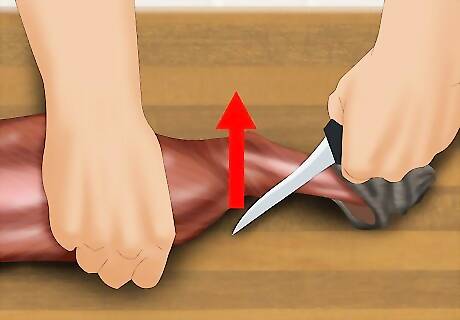
Cut off the feet. Cut the feet off at the rabbit’s ankles. Use your hands to snap the feet off the ankles and then a knife to cut through the tendons and muscles. Cut the feet off one by one.
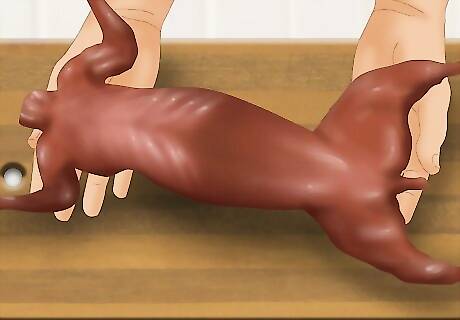
Remove the coat completely. Pop the rabbit by its shoulders so that it releases from its coat as you hold down the fur and skin from the carcass. You may use the fur later to make socks or other warm accessories.
Gutting the Rabbit
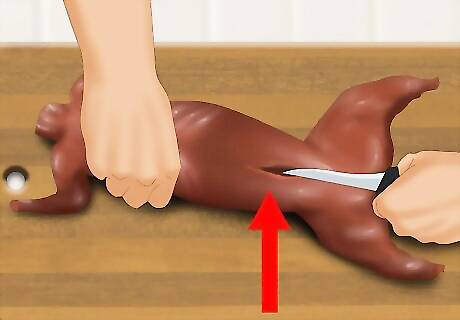
Make a small incision in the belly. After you have removed the feet, tail, and head, use a sharp knife to carefully make a small incision around the belly area. You must be careful not to slice open the bladder or colon that lie just underneath the belly.
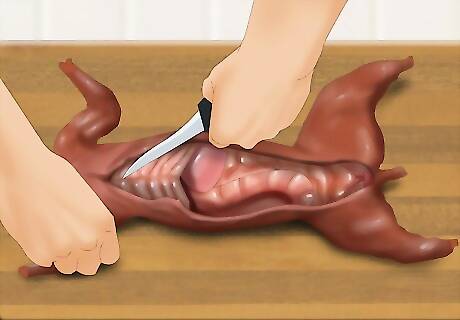
Open the chest cavity. Lift the skin away from the rabbit’s intestines using two fingers. Use your knife to cut from the ribcage down through its pelvis. Cut into the chest cavity to see the lungs and heart. You will also see a membrane separating its intestines from the chest cavity.
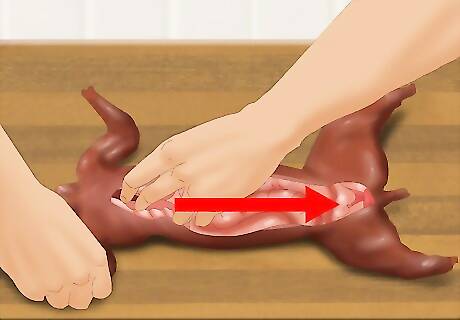
Remove the innards. Place your middle and index fingers at the top of the rabbit’s chest cavity and press against its spine all the way down. Remove the intestines and all its organs by pulling down all in one motion. Make sure everything is all the way out as you keep pulling down. Allowing the rabbit to decompose is unhealthy. Make sure you remove the innards immediately or else your meat will become rotten. Don’t cut the intestines because it will produce a rank odour and the insides may contaminate your meat. Reach toward the ribs to remove them.
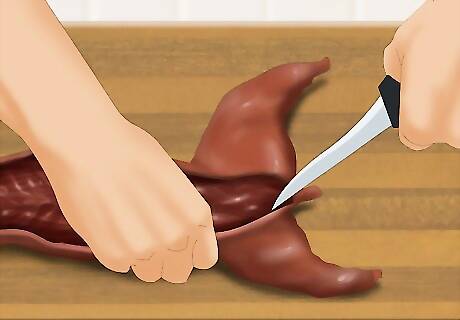
Clean the remaining carcass. Clear the colon by cutting through the pelvic bone. Be sure not to damage it. Clean the chest and abdominal cavity by pulling out any remaining pieces of innards or remaining membranes.
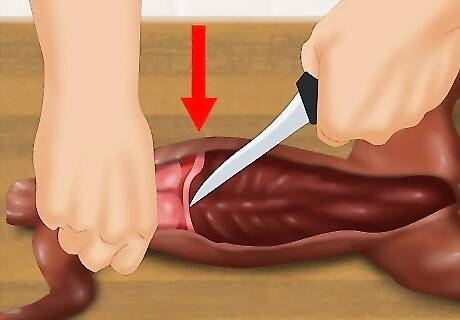
Slice the diaphragm. It is muscular and below the heart and lungs. Remove both the lungs and heart. Some people enjoy eating the heart and lungs but it’s a matter of personal taste.
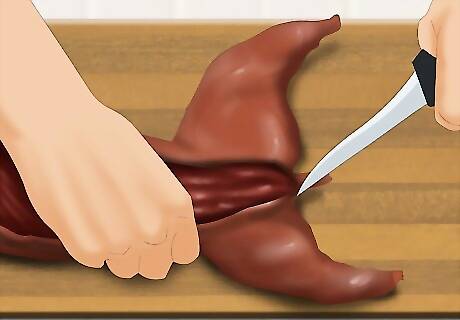
Remove remaining poop. Near the tail, cut a small section and find the rectal area to remove any poop. Be thorough so as not to contaminate the rest of the meat.
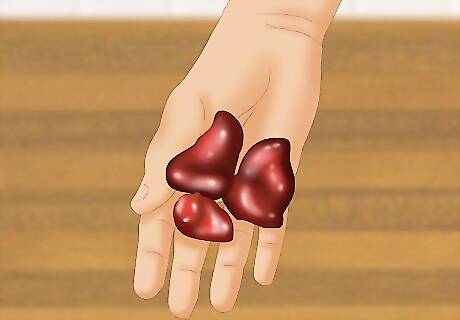
Salvage edible organs. The heart, kidneys, and liver can all be cooked in a variety of ways. You may keep them in tact and try out different recipes. Make sure that the liver is a deep red. The rabbit may be unhealthy if the liver looks abnormal with muddled spots or discoloration. If that’s the case, do not eat the meat.
Butchering
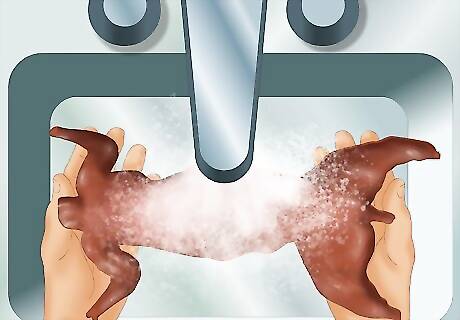
Wash the rabbit. Go to a sink and be sure to wash both the inside and outside of the rabbit thoroughly. Clean off any debris, blood, or hair left from the field dressing process. If you are in the field, make sure to use a fresh running water source or boil water and clean the rabbit.
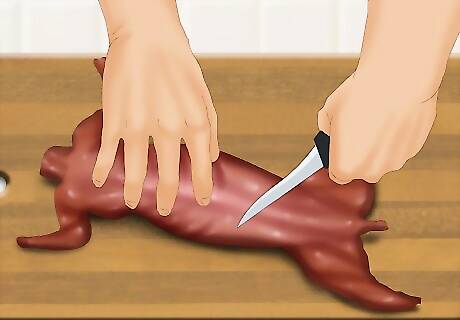
Remove the silver skin. Silver skin is the rabbit’s skin as well as little pieces of fat. Use a very sharp knife or cutting utensil. This may be very tedious but be patient and careful not to cut yourself.
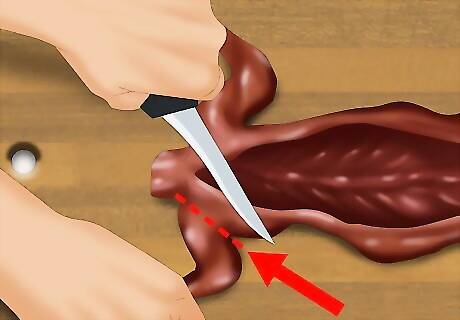
Remove the front legs. The front legs are not attached by bone to the rest of the body so, after you have removed the silver skin, remove as much meat as possible by cutting close to the rabbit’s ribcage. Remove the front legs by cutting just underneath the shoulder blades.
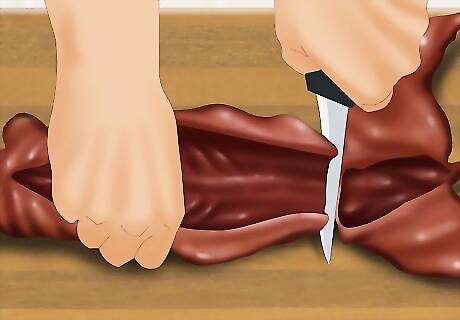
Remove the meat from the belly. Similar to bacon from a pig, this is a choice cut of meat. Use a sharp knife to trim close up against the rabbit’s loin and down its ribs. Do this for both sides of the rabbit.
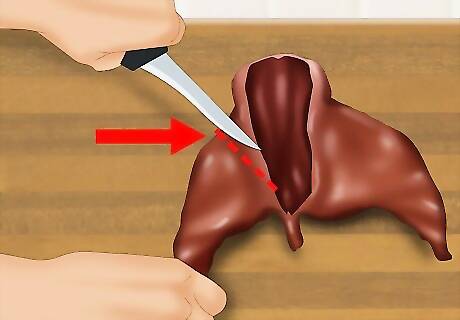
Remove the back legs. Use a sharp knife to cut from the hip joint through the meat of the back leg. Use your fingers to remove the meat and snap off each leg. Remove the back legs by cutting through the hip sockets.

Remove the pelvis, neck, and ribcage. After you remove its legs, remove its pelvis. Fillet the back loin and ribs cutting against the spine and through the ribs. Don’t cut any meat off the ribcage. Cut it away from the ribs. Cut both sides of the ribs from the spine; then, cut off the neck and ribcage as one piece with the pelvis. You can make rabbit stock with the neck, ribcage, and pelvis.

Cut the loins/spine into sections. For serving and portioning your meat, cut the loins/spine into three sections. The loins, the top and bottom of the spine, and the back legs have the most meat. You may use the ribs, neck, and pelvis in a stock pot and cook the remaining meat which include: 2 back legs, 2 front legs, 2 belly meats, and 3 loin sections.
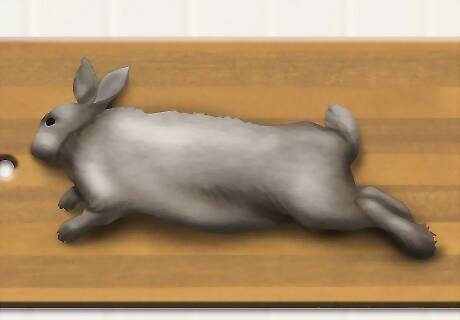
Remember to respect the process. Butchering an animal isn’t very enjoyable but can connect you to your ancestors and remind you that meat comes from nature. Don’t take these living creatures for granted.



















Comments
0 comment